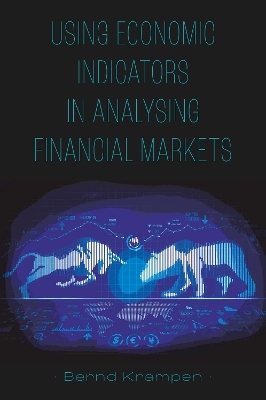
Using Economic Indicators in Analysing Financial Markets
Emerald Publishing Limited (Verlag)
978-1-80455-325-1 (ISBN)
The first and second part of Using Economic Indicators in Analysing Financial Markets focuses on the short-term analysis, explaining exactly what the indicators are, why they are significant, where and when they are published, and how reliable they are. In the third part, author Bernd Krampen highlights medium and long-term economic trends: It is shown how some previously discussed and additional market indicators like stocks, bond yields, commodities can be employed as basis for forecasting both GDP growth and inflation. This includes the estimation of possible future recessions. In the fourth part the predominantly good forecast properties of sentiment indicators are illustrated examining the real estate market, which is rounded up by an introduction into psychology and Behavioural Finance providing further tips and tricks in analysing financial markets.
Using Economic Indicators in Analysing Financial Markets is an invaluable resource for investors, strategists, policymakers, students, and private investors worldwide who want to understand the true meaning of the latest economic trends to make the best decisions for future profits on financial markets.
Bernd Krampen is economist and financial analyst at Norddeutsche Landesbank Girozentrale, Germany, and holds a CEFA certificate of DVFA/EFFAS society of German/European financial analysts.
PART I: On the Pulse of the Economy – Listen to the Signals!
Chapter 1. Procedure for the economic cycle analysis-Challenges and purposes of market analysis and forecasts
Chapter 2. Toolbox of economic indicators - interdependencies, time horizon, best signaller, US dominance
PART II: Short-Term Economic Assessments – Brevity is the Spice!
Chapter 3. USA: This is where the music plays! Schedule, GDP growth, business surveys, labour market, manufacturing, consumption, real estate, other macro data, prices
Chapter 4. Asia: China and Japan provide additional market impulses! Schedule, GDP growth, business surveys
Chapter 5. Europe & Germany: The domestic market remains relevant for us! Schedule, GDP growth, business surveys-Using Economic Indicators in Analysing Financial Markets – with a Focus on US Data
PART III: Medium- and Long-Term Economic Trends – A Lot of Ideas!
Chapter 6. Growth contributions to quarterly GDP growth: Slowly approaching the goal -Consumption, structures, equipment, residential, inventory, net exports, government
Chapter 7. Longer term growth and inflation estimates: leading indicators show direction - Sentiment surveys, economic data, market indicators, commodities, inflation indicators
Chapter 8. The "cream of the crop" of economic cycle analysis: correctly predicting a recession - Recession indicators, market indicators, sentiment surveys, economic data
PART IV: It’s the People Who Matter – Sentiment and Psychology Play a Decisive Role
Chapter 9. Sentiment surveys – the NAHB index with a special focus on the subprime crisis - Special features, sentiment surveys, housing prices, starts and permits
Chapter 10. Psychology as a factor on the financial markets not to be underestimated Interdependencies, coping with information, prospect theory, psychological needs, parties
Chapter 11. Conclusion
| Erscheinungsdatum | 30.01.2023 |
|---|---|
| Verlagsort | Bingley |
| Sprache | englisch |
| Maße | 152 x 229 mm |
| Gewicht | 504 g |
| Themenwelt | Wirtschaft ► Betriebswirtschaft / Management ► Finanzierung |
| Wirtschaft ► Volkswirtschaftslehre ► Makroökonomie | |
| Wirtschaft ► Volkswirtschaftslehre ► Ökonometrie | |
| ISBN-10 | 1-80455-325-5 / 1804553255 |
| ISBN-13 | 978-1-80455-325-1 / 9781804553251 |
| Zustand | Neuware |
| Haben Sie eine Frage zum Produkt? |
aus dem Bereich


